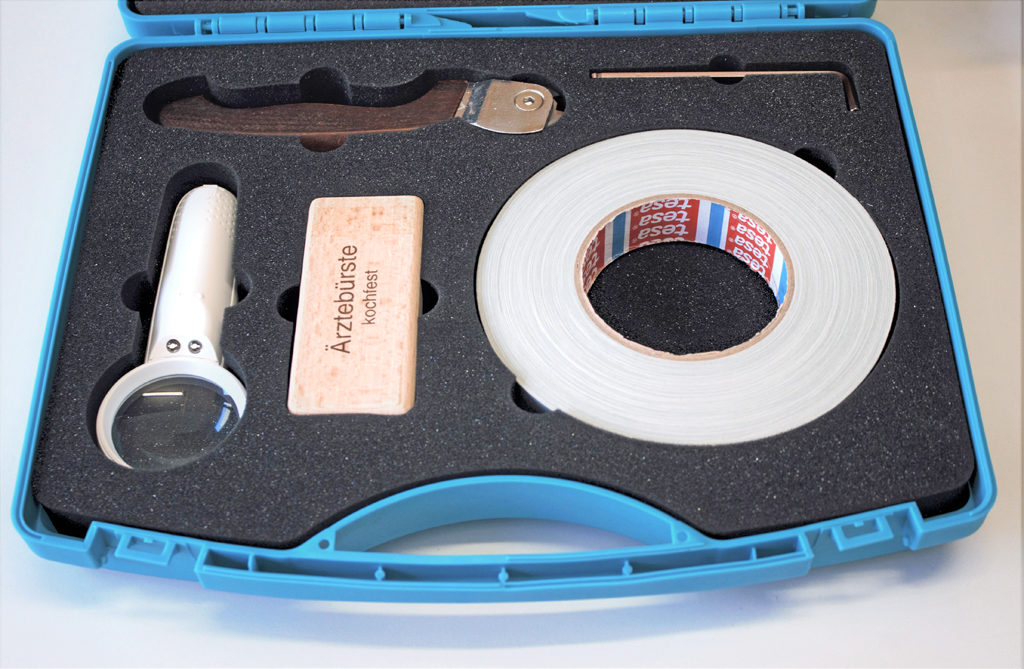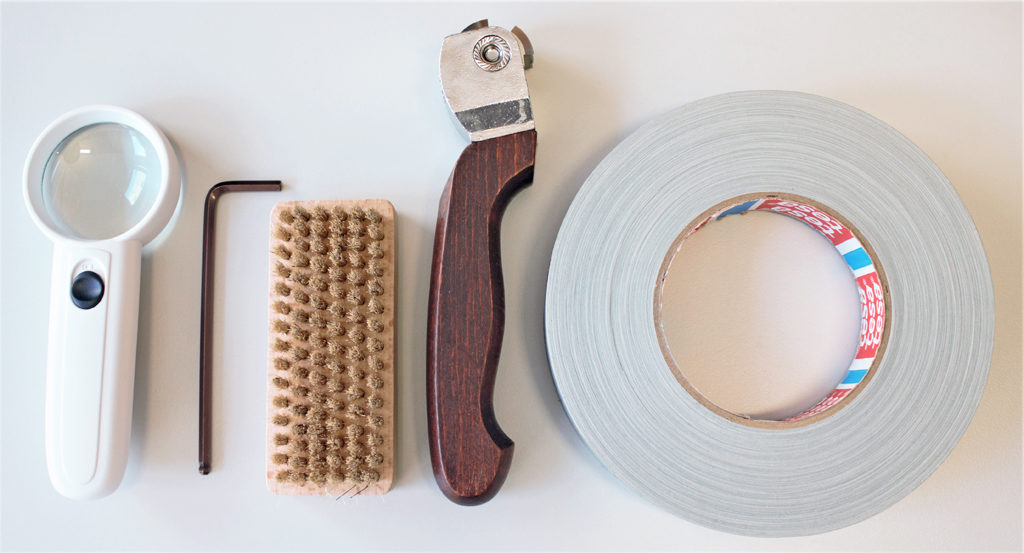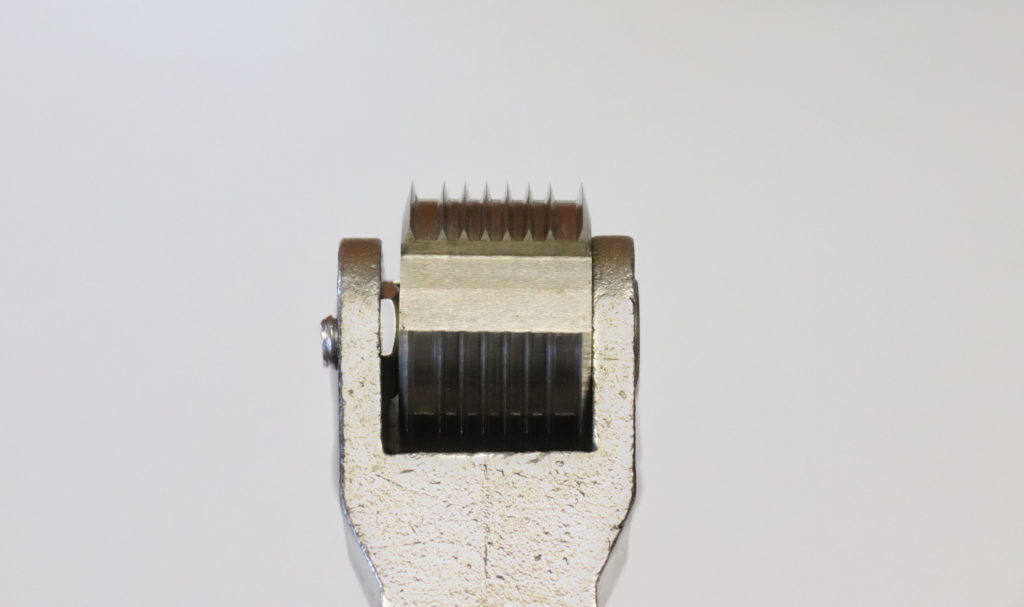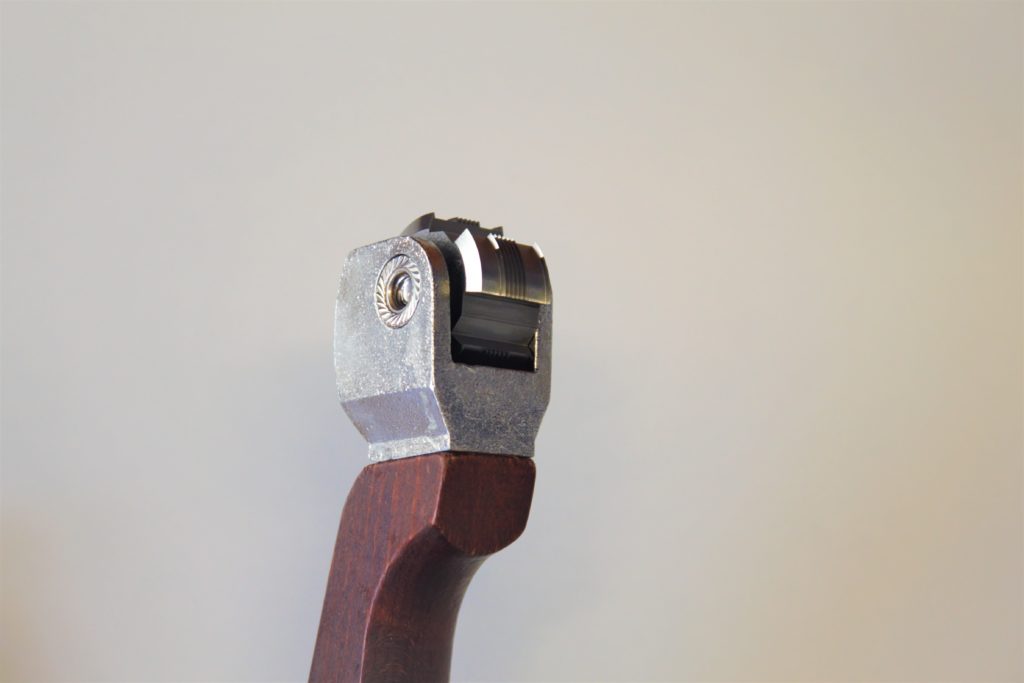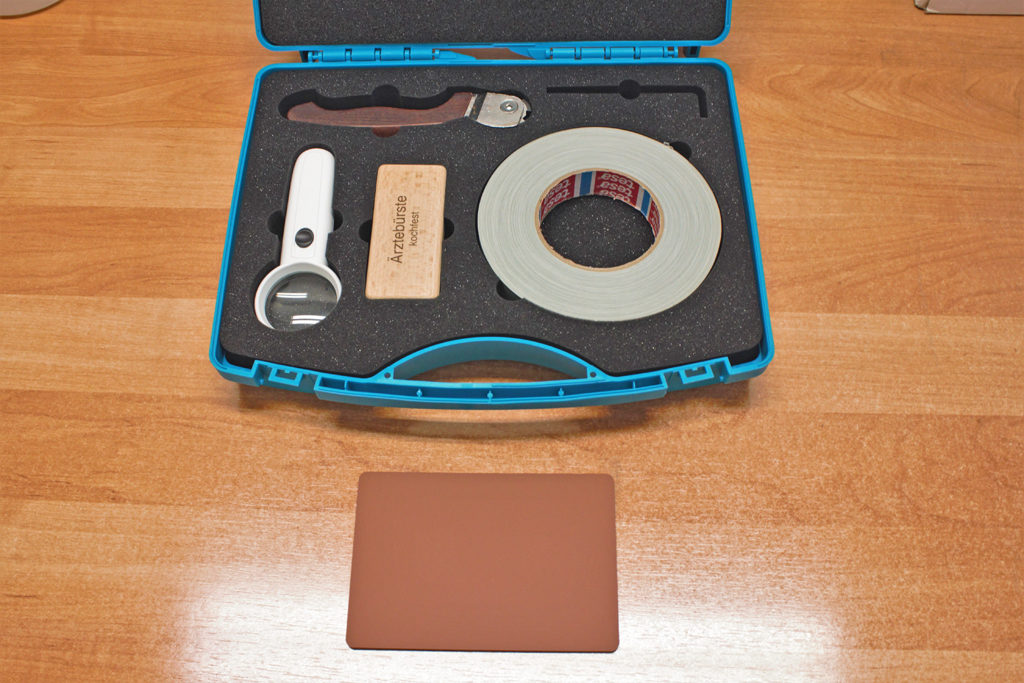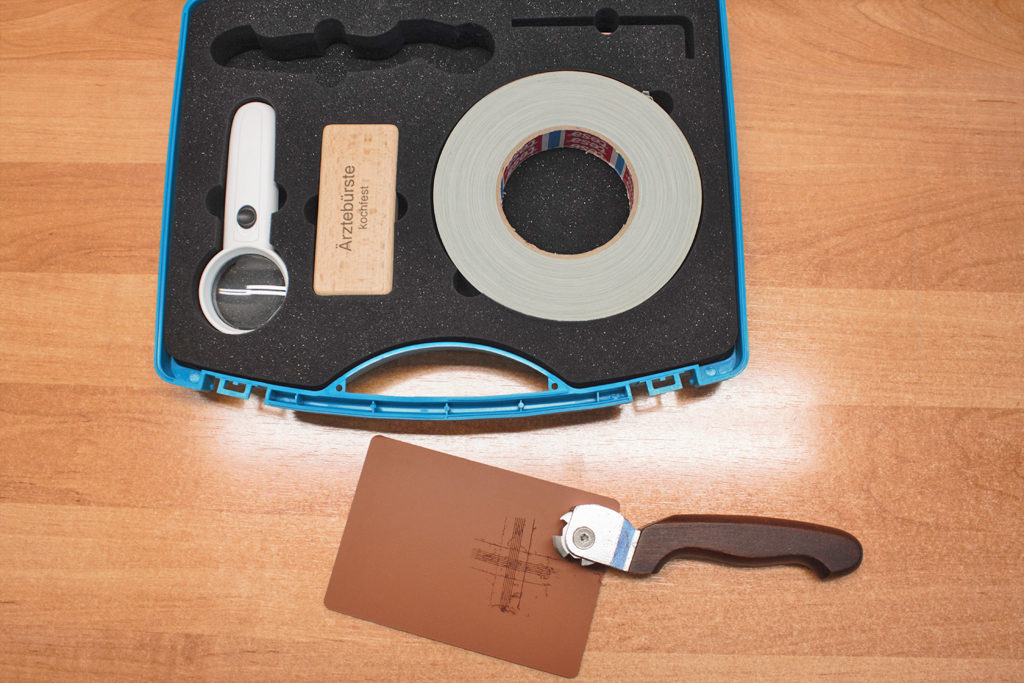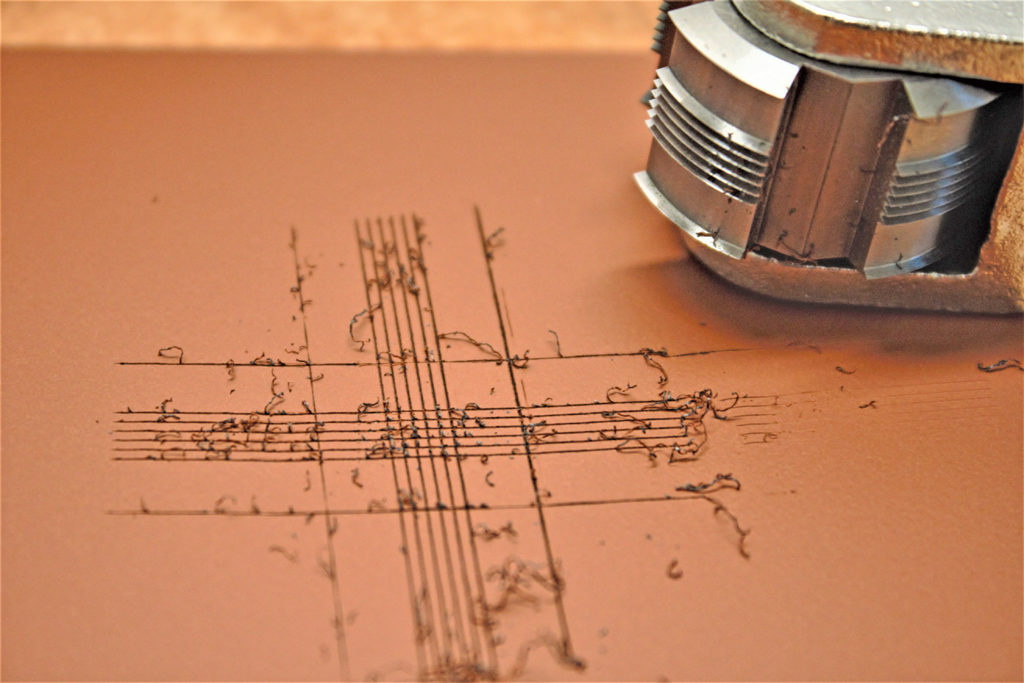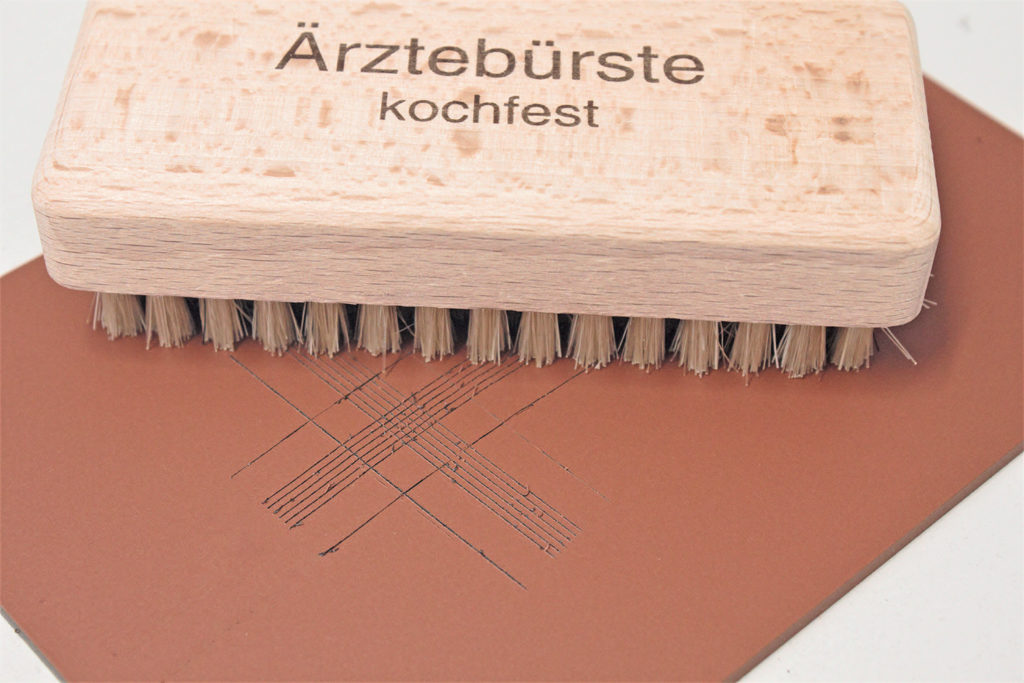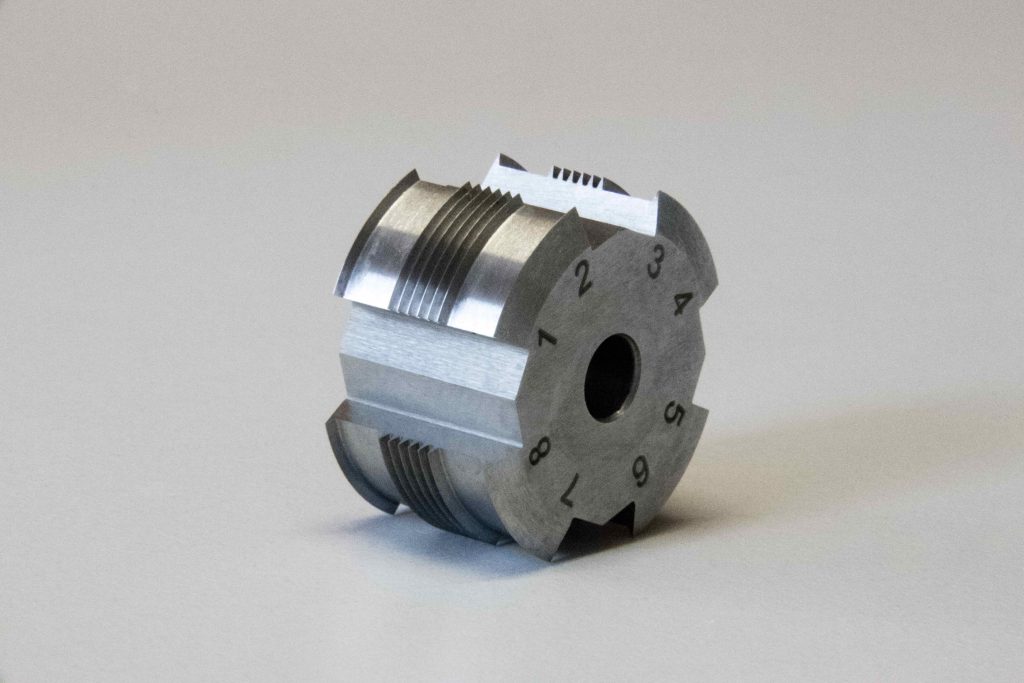Crosshatch Cutter Set according to DIN EN ISO 2409
Description:
The Crosshatch Cutter is designed and manufactured according to the standards DIN EN ISO 2409, GB / T 9286, BS 3900 E6 and ASTM D3359.
Technical specifications:
Gap (mm): 2
Blades: 6
Squares after cross cut: 25
Cutting Edges: 8
Coating Thickness (µm): 0~120
Item number: PG-2202/4C
Delivery Scope: Crosshatch Cutter, Hexagonal Screwdriver, Magnifier, Brush, Tesa Adhesive Tape 4657 (50m x 25mm)
Including manufacturer’s test certificate and 1 year warranty
Construction of the device:
The cross cutter (also called cross hatch tester or crosshatch cutter) consists of a handle with a round cutting tool. There are 4 knives around the cutting tool, which can be used on both sides (= 8 cutting edges). Each cutting edge is made up of 6 blades. The cross cut is made with one of the 8 cutting edges, the other 7 are used as soon as the cutting edge becomes blunt.
We suggest changing the cutting edge after about 700 cuts using the allen key to loosen the cutting tool and spinning the cutting tool until one of the remaining cutting edge is in position.
If all 8 cutting edges were each used for approx. 700-1000 cross-cuts, it is recommended to replace the complete cutting tool with a new one.
The distances between the blades are either 1.0 mm, 1.5 mm, 2.0 mm or 3.0 mm.
General:
The standard DIN EN ISO 2409 (cross-cut test) specifies the following:
The spacing of the cuts in each direction shall be equal and shall depend on the thickness of the coating and on the type of substrate as follow:
up to 60 µm:
1 mm spacing, for hard (e.g metal and plastics) substrates;
up to 60 µm:
2 mm spacing, for soft (e.g wood and plaster) substrates;
61 µm to 120 µm:
2 mm spacing, for both hard and soft substrates;
121 µm to 250 µm:
3 mm spacing, for both hard and soft substrates;
The cross-cut test is not suitable for coatings of total thicknesses greater then 250 µm



